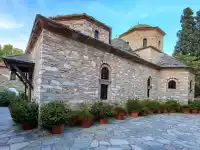Stara Praga is a Warsaw district where reality mixes with legends, mythology and rebellion with mystery. Every tourist guidebook will tell you: “Go see Warsaw’s Old Town, that’s where it’s authentic.” It’s true, but the Old Town is more of a replica than reality – it was destroyed during the war and completely rebuilt. Old Praga, however, stands as it stood. Here you can still feel the breath of the real city. It’s raw and authentic. A place where the past meets the underground and where ghosts are said to still keep watch.
Praga was once an independent city, incorporated into Warsaw only in 1791. And while World War II leveled the left bank, Praga on the right bank of the Vistula miraculously remained almost untouched. That’s why it’s considered one of the few places where you can see original Warsaw today.
Most people admire the skyscrapers, the Palace of Culture, or the reconstructed Old Town in Poland’s capital. But just cross the Vistula, and you find yourself in a completely different reality – in Praga. Once a working-class district, from which Warsaw residents returned home fearing for their wallets. Today, it’s referred to as the “Brooklyn of Warsaw.”
Facades That Survived the War
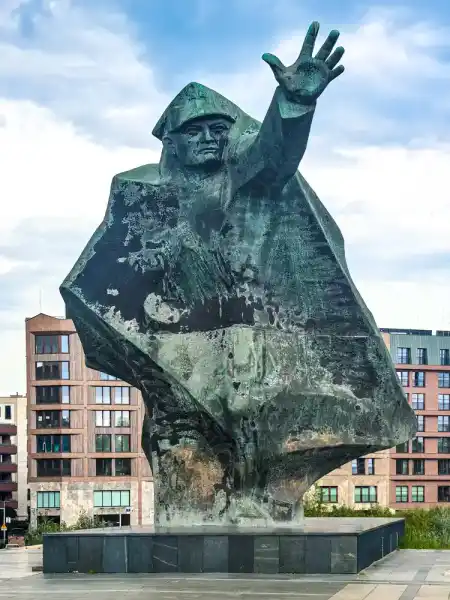
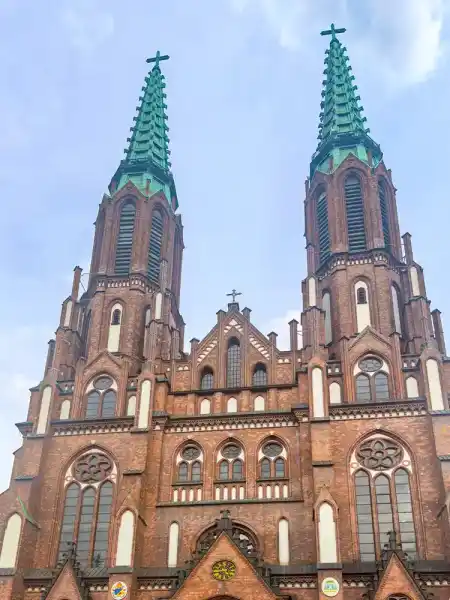
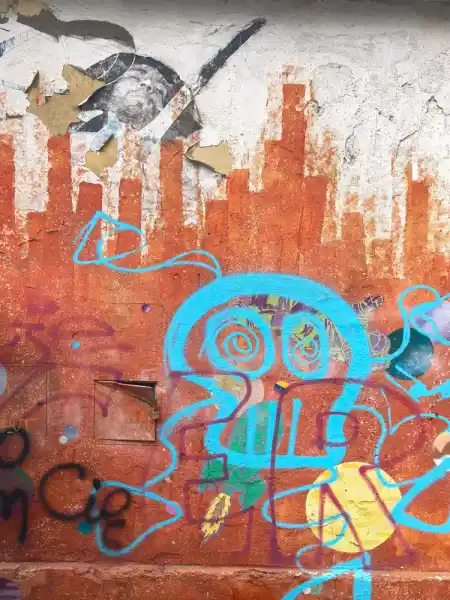
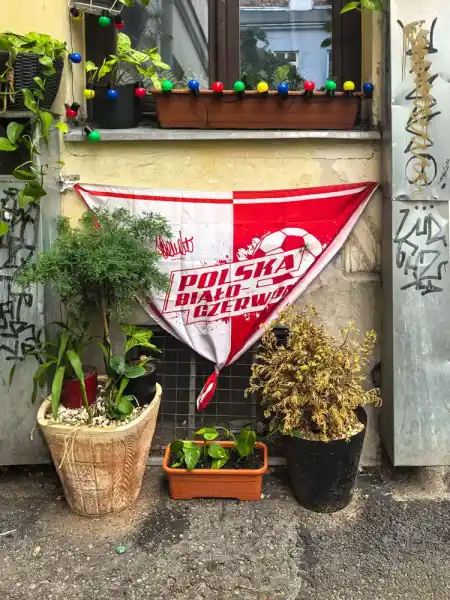
As soon as we crossed the footbridge, we were greeted by the statue of the 1st Infantry Division of Tadeusz Kościuszko memorial. It seemed to be signaling us: “Stop. Don’t go further.”
The houses in Stara Praga don’t look elegant, rather shabby, but that’s their strength. On some walls, you can see traces of bullets from World War II. The same walls bear graffiti – revolutionary messages from the young generation. One doesn’t need to explain much here – history and story are inscribed directly into the bricks.
We began to understand the soul of this place. We rode to the Cathedral of St. Michael the Archangel, still expecting something exceptional. Only after a longer time did I understand the main thing: “Enter the courtyards.”
In one such courtyard with old bricks, I greeted two guys sitting on pallet chairs, beers in hand. When I told them what I was looking for, they laughed: “Here, you don’t need to go to a museum. The museum is right on the street. Everywhere.” And they were right.

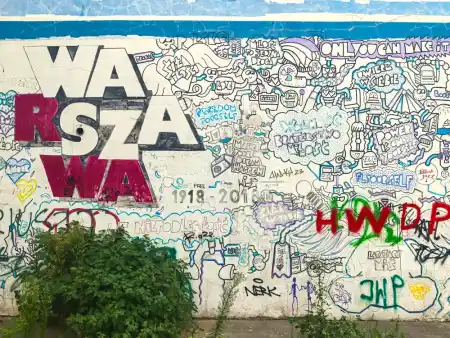
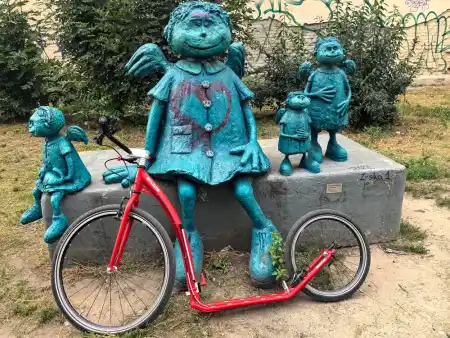

Between Pub and Cathedral
Praga has always been a working-class district. Where once the smell of beer and iron mixed, today everything stands side by side – the Orthodox Church of St. Mary Magdalene from 1869 with its onion domes, dilapidated factories, socialist blocks, modern buildings, and hipster bars.
This is where the famous Koneser brewery once stood, now rebuilt into a modern complex of galleries, restaurants, and vodka museums. And just around the corner, you’ll find courtyards where it looks like time has stopped – crumbling staircases, laundry on lines, children with a ball.
Graffiti in the Streets
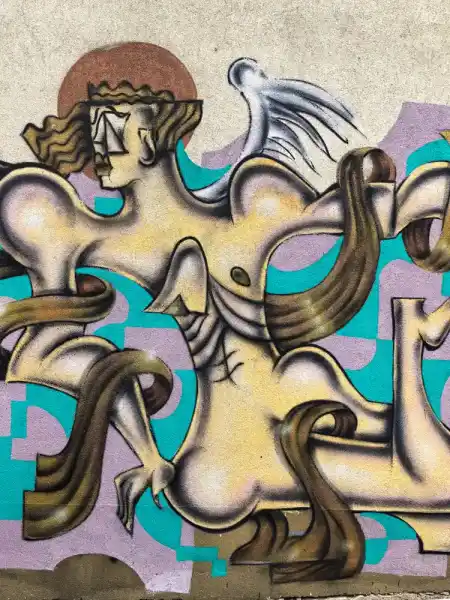
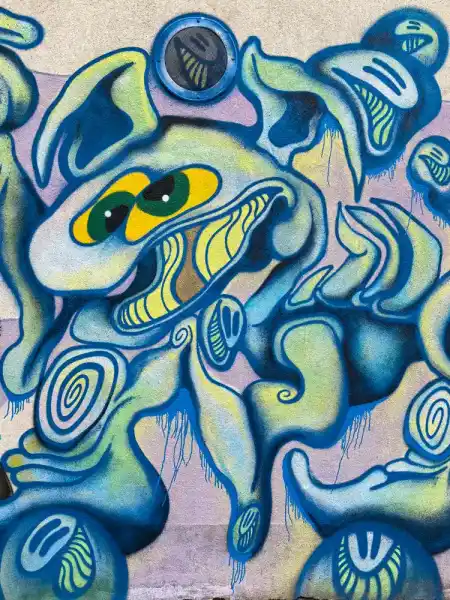
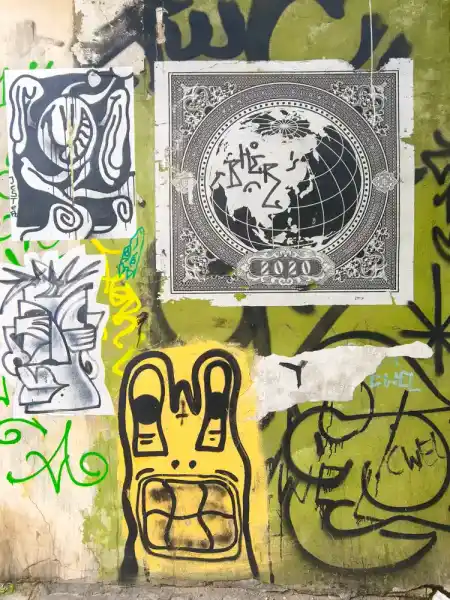
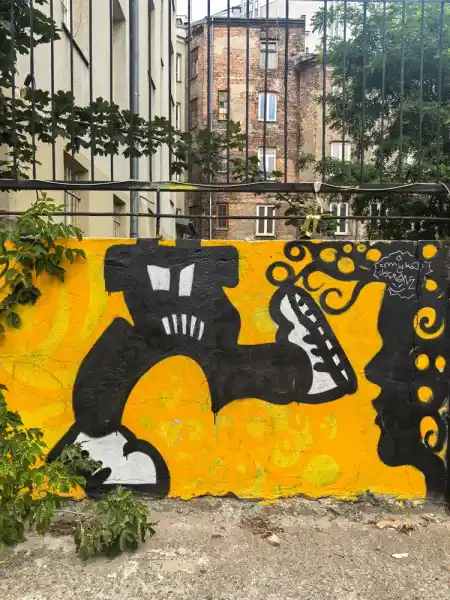
Graffiti in Praga isn’t just scribbles on walls. They’re manifestos. One wall bears a huge painting of an eagle, another is covered with portraits of local legends. My favorite Jimi wasn’t missing, nor was the Slovak bear.
The most famous is a mural dedicated to bands and musicians born in this district – Czesław Niemen or Tadeusz Nalepa. Praga has a musical tradition that dates back to gypsy bands and street accordionists.
Mysticism of Legends and Ghosts
Historians remind us that Praga was a site of heavy fighting during the Prussian occupation and the Warsaw Uprising. Perhaps that’s why its atmosphere still has a somewhat heavy undertone. It’s whispered that Praga is haunted by ghosts. In one courtyard, a soldier who fell here during the uprising is said to still appear. Someone else claims to hear footsteps on the stairs of an abandoned house at night, even though no one lives there anymore. Johnny seemed to succumb to this, because the more I delved into the courtyards of this district, the less willing he was to cross the boundaries of the old workers’ barracks.
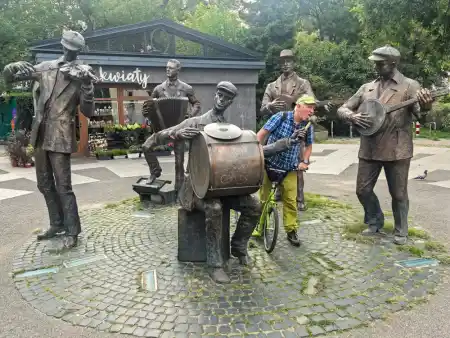
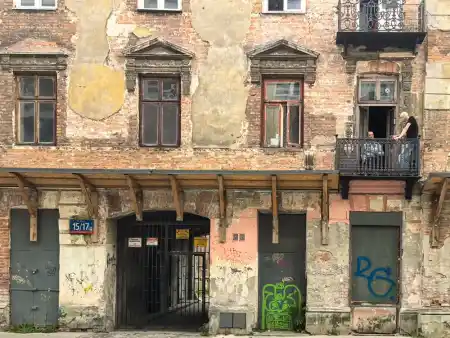
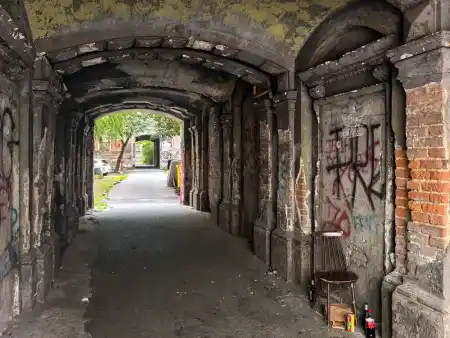
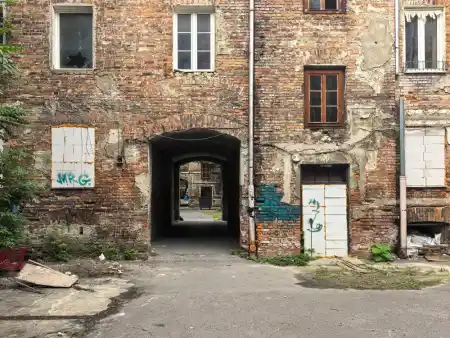
“Johnny, come, you haven’t seen this.”
“I’ll wait…”
“There’s really a courtyard here, in the courtyard”
“I’ll wait for you outside.”
Moving between the courtyards of old tenement houses was challenging. Johny decided to wait on the street instead, in civilization. Even Warsaw residents themselves often claim that a night in Praga is not for the faint-hearted. Many don’t feel safe there, and it’s no wonder.
For decades, it was a neighborhood of poverty, ruined tenements, where entire families survived in dilapidated barracks. Praga earned a reputation as a “Bermuda Triangle” – a place where tourists preferred not to venture if they still wanted to count on their wallet in the morning.
Tribute to Polanski
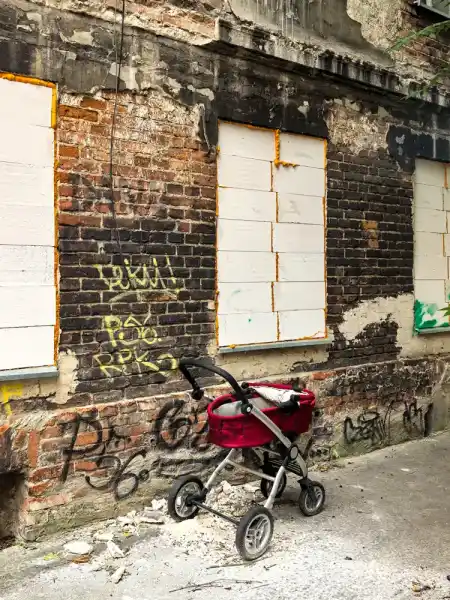
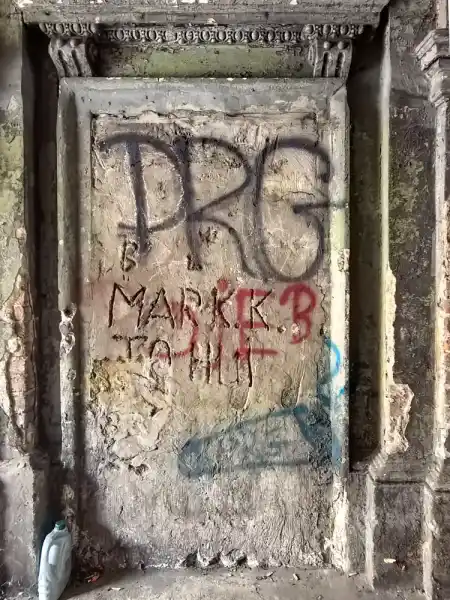
And yet these shabby courtyards and gates have a special cinematic charisma. It was here that Roman Polanski shot famous scenes from the film “The Pianist“. These crumbling houses perfectly substituted for the sets of the Warsaw Ghetto, which had long ceased to exist. Instead of sterile film studios, he used reality – ruins that couldn’t be invented even by the most suggestive decoration. And so Praga was forever inscribed in the history of cinema.
Praga today: between past and future
Praga has a completely different atmosphere than the industrial look of Gdansk‘s 100cznia. It’s more reminiscent of the atmosphere of Prašina or Stínadla from the “Rychle Šípy” series.
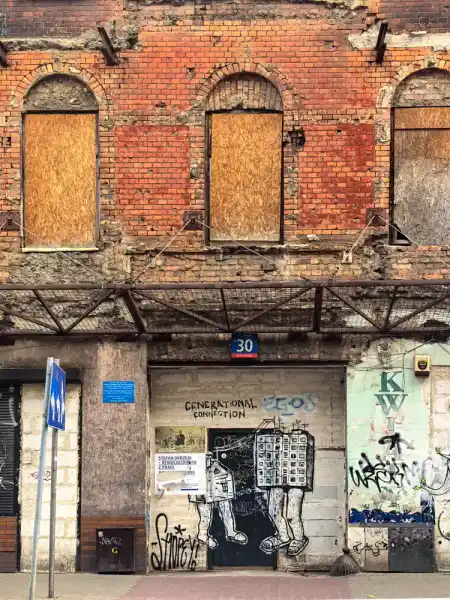
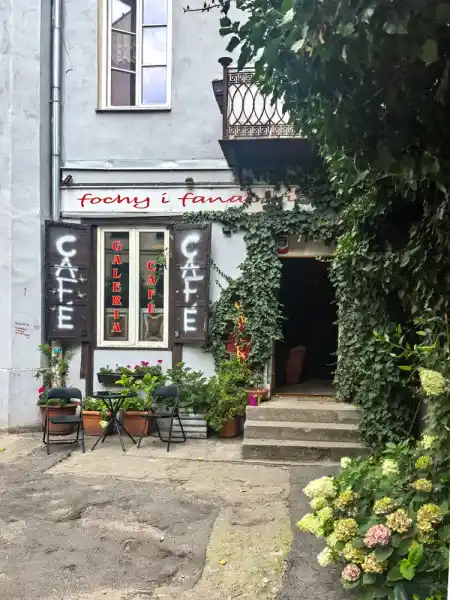
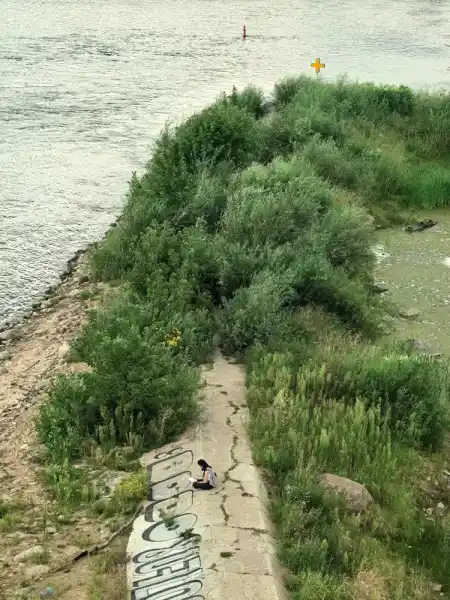
In recent years, Stara Praga has been changing. Hipsters, artists, and investors have discovered its potential. Former factories are now centers of culture, alternative music plays in clubs, craft beer is sold at markets, and mysterious alleys are becoming harder to find. Even the iconic Różycki Bazaar had a padlock on its gate.
The Koneser Center is now a symbol of this change – from a working-class brewery to luxury apartments and modern bars. And yet, just off the main street, you can find a dirty courtyard with broken windows and chained dogs.
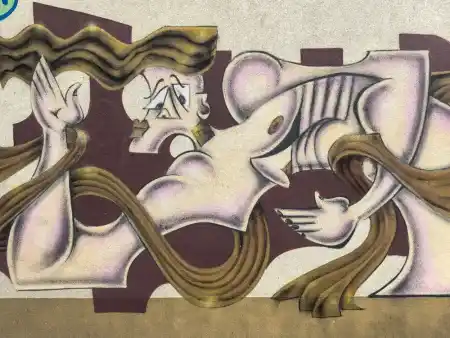
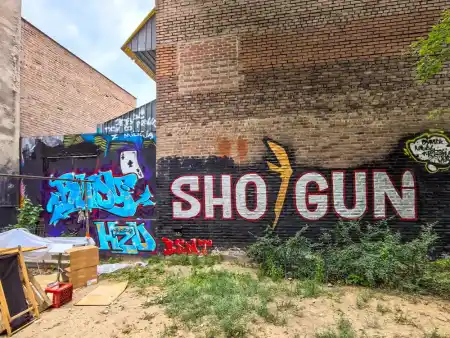
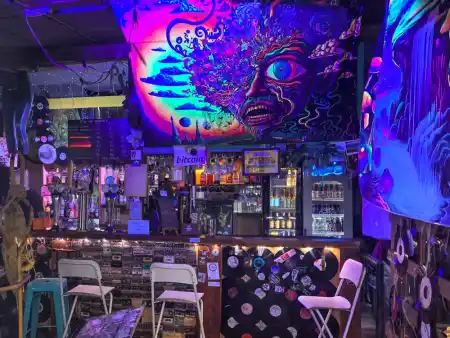
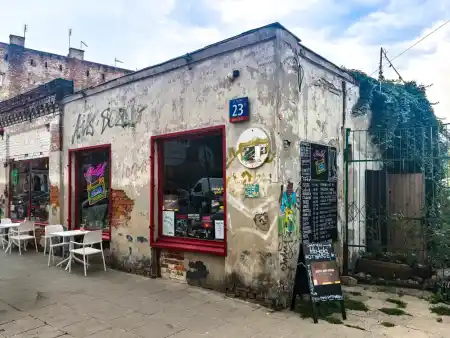
Stara Praga
If you want to see Warsaw unfiltered, forget about postcards and castles. Go to Praga. It’s a place that might scare you a little, maybe enchant you, but will certainly stay in your memory.
Tips on Stara Praga
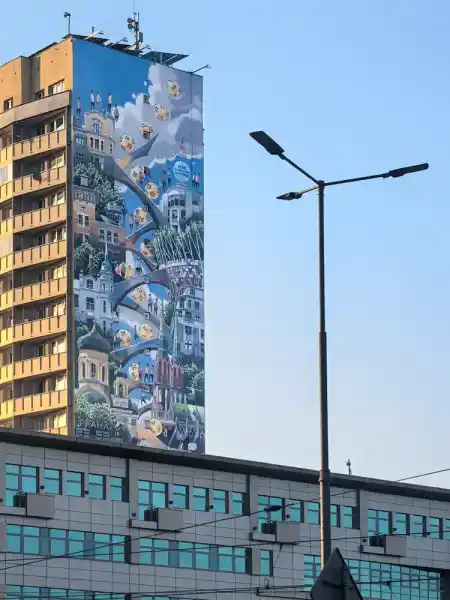
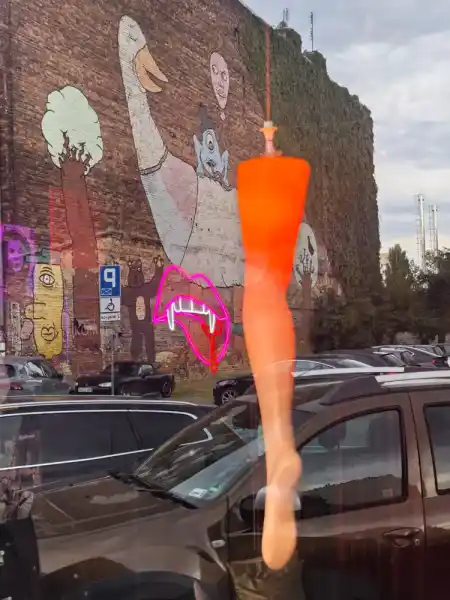

- St. Michael and St. Florian Cathedral – a neo-Gothic church that is one of the landmarks of the district.
- Warsaw Zoo – one of the oldest zoos in Europe, opened in 1928.
- Różycki Bazaar – a legendary marketplace that reflects old Praga and its street atmosphere; we found it closed.
- Ząbkowska Street – the heart of alternative culture, full of bars, galleries, and street art.
- Praga Museum – tells the history of the district from its beginnings to the present day.
- Filming locations from “The Pianist” – if you know where to look, you’ll discover courtyards and houses that served as scenes for Polanski’s film.
- And it is definitely worth discovering a thousand shades of rust.




